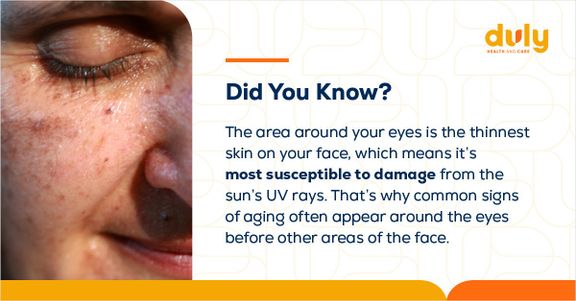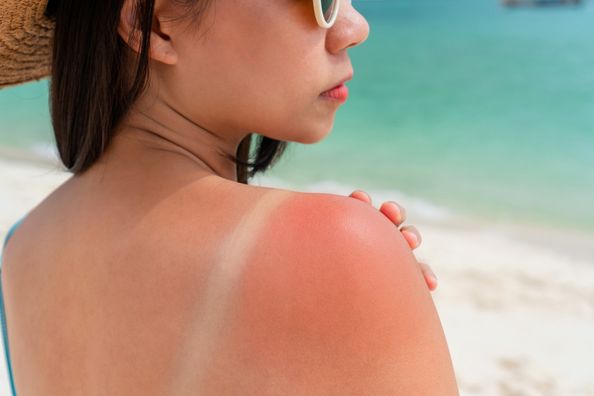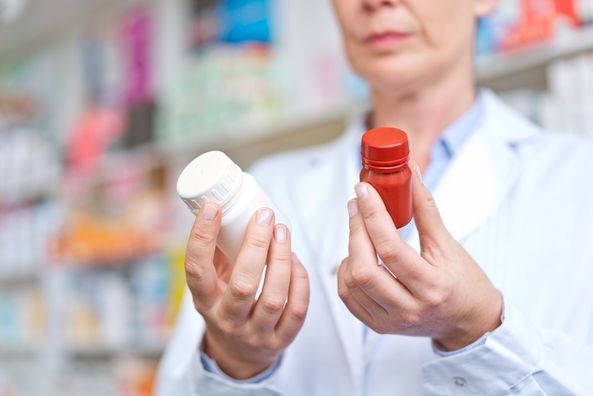You fell asleep on the beach. You were playing basketball outside on a hot day and forgot to reapply sunscreen. Or maybe, you were taking a walk around the park on a cloudy afternoon, thinking sunscreen was unnecessary. And now, your skin is prickling with the start of a sunburn.
Sunburns are common and they don’t just happen on hot summer days — ultraviolet (UV) rays from the sun that cause sunburn can damage your skin in the middle of winter or on a cloudy day.
A sunburn might simply look like a giant red patch, but there’s a lot more going on under the skin.
Here’s a closer look at the science of sunburns — and what they actually do to your body.
1. It’s All About the UV Rays.
Your body has melanin, which is a pigment that colors your skin and protects it against the sun’s harmful UV rays. People with lighter skin have less melanin, which means they have less protection and are more prone to sunburn. People with darker skin have more melanin and greater protection, but they are still susceptible to burn.
When the sun hits your skin, the UV rays damage skin cells. Your immune system responds by increasing blood flow to the area, which is what makes a sunburn red and warm. While this is happening, the damaged skin cells release chemicals that transmit messages throughout your body. Your brain interprets these messages as a painful burning sensation.
2. Sunburns Can Reach Different Layers of the Skin — and That Makes a Difference.
Just like any other burn, sunburns can vary in severity. Severity is measured by which level of skin has been damaged.
Many sunburns are first-degree burns, meaning they only affect cells in the outermost layer of the skin (epidermis). These burns are red and painful, and generally heal within a few days.
Second-degree sunburns are more serious because the damage has extended to a deeper layer of skin (dermis) and into the nerve endings. This can cause swelling, blistering, and severe reddening of the skin. Second-degree sunburns are more painful than first-degree burns, and they also take longer to heal.
Third-degree sunburns are the most severe, but they are very rare. These burns damage every layer of your skin, can destroy nerve endings, and require emergency care.
3. Peeling is Healing.
Peeling skin may not look pleasant — and may be a bit itchy — but it’s a good thing. It’s a sign that your immune system is hard at work. Peeling occurs when your white blood cells attack and get rid of your damaged skin cells.
Let your body get rid of peeling skin naturally. Picking at peeling skin or using exfoliant can cause infection and make it difficult to heal.
If a sunburn has damaged your skin, or if you have questions about preventing sunburn, make an appointment with a Duly Health and Care dermatologist.
4. Sunburns May Be to Blame for Early Skin Aging
Wrinkles, brown spots, and fine lines — these are all skin changes that you can expect as you get older. But aging isn’t the only culprit. Photoaging, also known as “premature aging” or “sun-damaged skin,” is to blame for 90% of the visible changes to the skin. Photoaging is the early aging of your skin that’s caused by a cumulative buildup of all of the sun damage you’ve received throughout your life.
Your skin contains elastin and collagen, which are proteins that make skin look young and smooth. Over time, sun damage breaks down these proteins, leading to saggy, dull, and “older-looking” skin.

Interested in learning about treatments for younger-looking skin? Read about the services at Duly Aesthetics.
5. Sunburns Cause Short-Term Damage…
When you think of the immediate aftermath of a sunburn, you probably think about painful red skin. But there are actually several other symptoms, and these require medical attention.
Get care right away if your sunburn is accompanied by:
- Fever
- Dizziness or fainting
- Rapid breathing
- Clammy or pale skin
- Chills
- Rash
- Severe, painful blisters
- Extreme thirst
- Pain in your eyes
- Sensitivity to light
These may be signs of other serious conditions, like heat exhaustion, dehydration, or shock.
6. …and Long-Term Damage
The long-term effects of sunburns don’t just affect your appearance. Sunburns are a leading cause of several types of skin cancer. They are associated with about 90% of nonmelanoma skin cancers, and may cause about 86% of all melanomas — one of the potentially deadliest forms of skin cancer.
- Sun damage starts from your very first burn and continues to build over time. The more sunburns you get during your life, the higher your risk of developing skin cancer.
- Your risk of developing melanoma more than doubles from just one singular blistering sunburn during your childhood or adolescent years.
- The more sunburns you have, the greater your risk for skin cancer. In fact, it takes as little as five sunburns in your entire life to more than double your risk of melanoma.
- If you get five or more sunburns between the ages of 15 and 20, your risk for nonmelanoma skin cancer increases by 68%, and your risk for melanoma increases by 80%.
You Know What the Sun is Doing. What Can YOU Do?
Fortunately, there are ways to protect yourself from sunburns — sunscreen, hats, sun protective clothing, and sunglasses can go a long way in keeping your skin safe.
Sunscreen in particular is one of your best bets for preventing sunburns. Regularly using a sunscreen with a sun protection factor (SPF) of 30 or higher daily can reduce your risk of squamous cell carcinoma (the second most common form of skin cancer) by 40% and your risk of melanoma by 50%.
Just make sure you’re choosing the correct sunscreen for your skin and following directions carefully so you can keep your skin safe and burn-free. To get the best broad-spectrum protection, decrease skin reactions, and be environmentally conscious, make sure to use a mineral-based sunscreen that contains either zinc oxide or titanium dioxide.
If you’ve experienced sunburns and want to understand the impact on your skin, including your risk of skin cancer, schedule an appointment with a Duly Health and Care dermatologist.
Health Topics:








